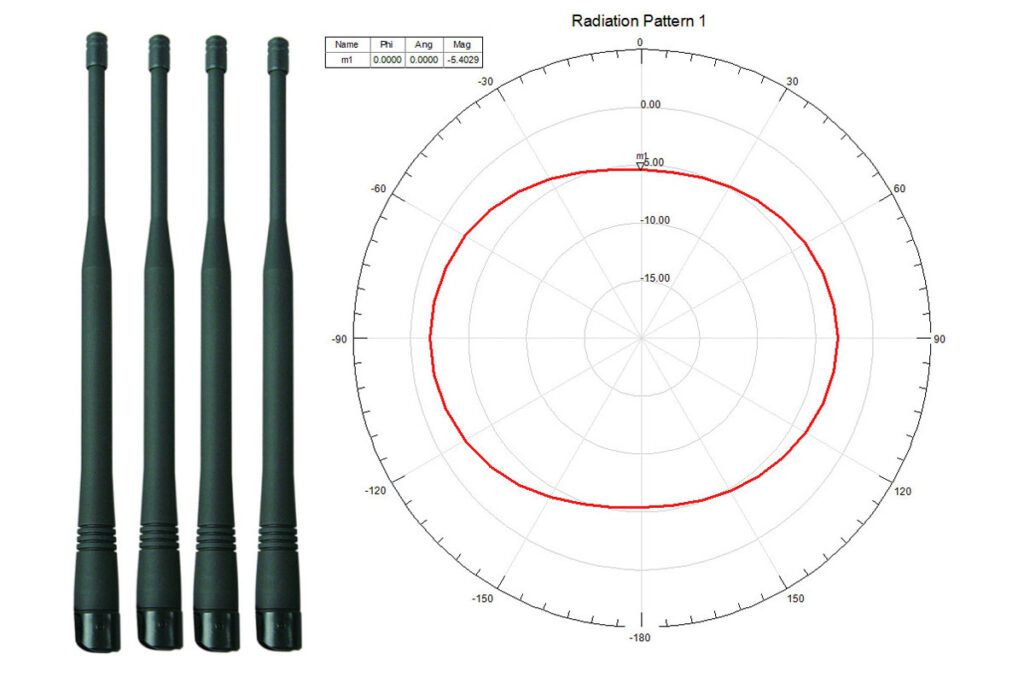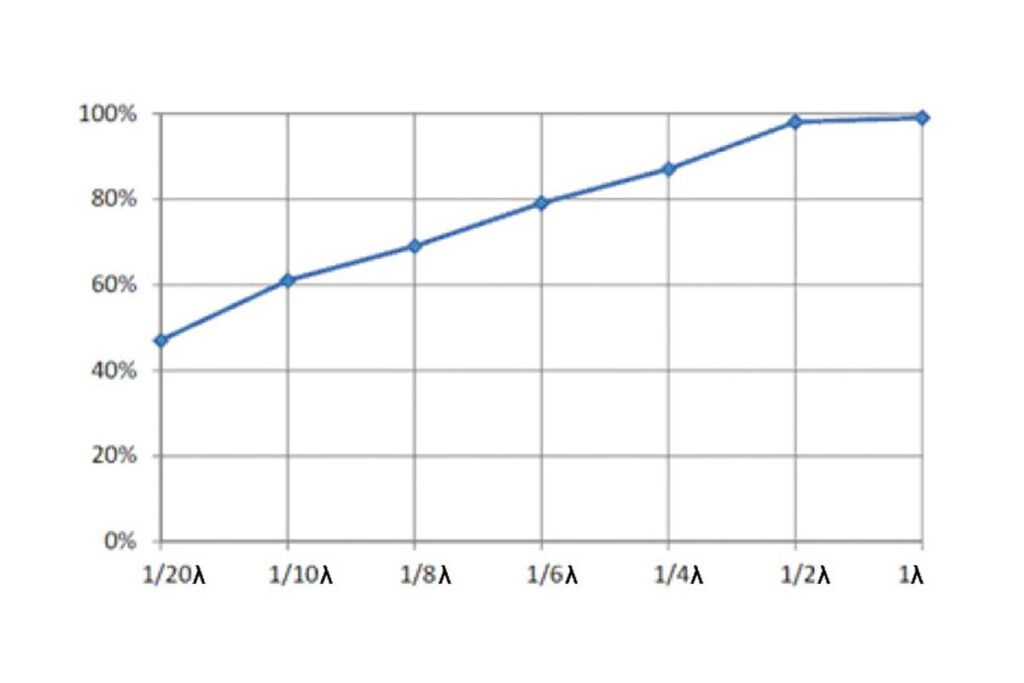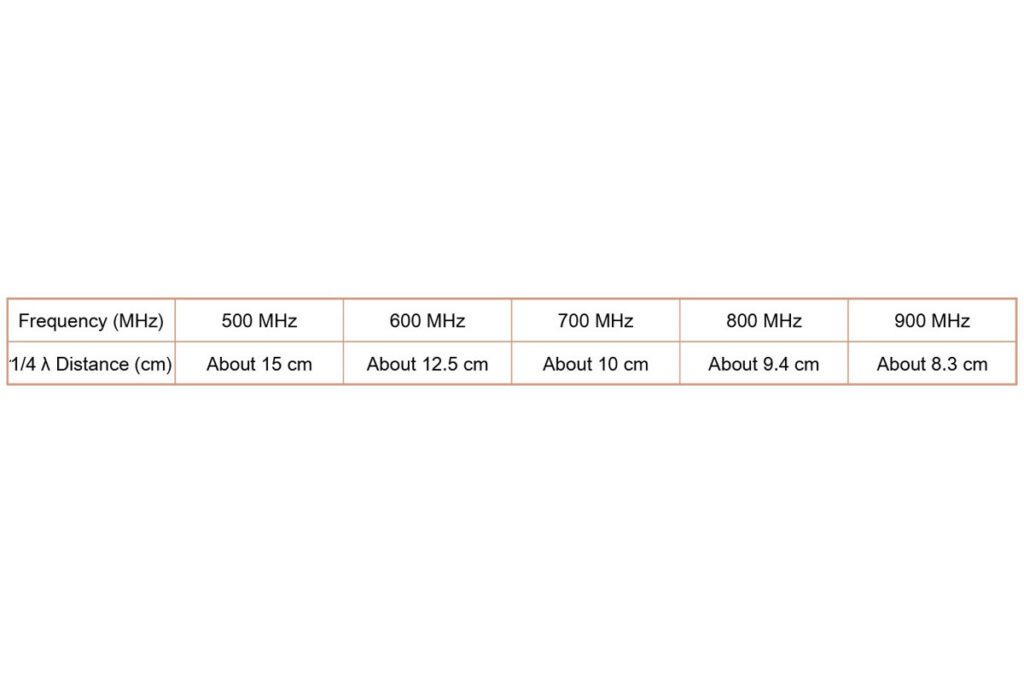During multi-channel operation, receivers are usually stacked up where antennas of each receiver are very close to each other. However, many people neglect the problem of how such arrangements will affect antenna efficiency. In fact, reduction of antenna efficiency greatly affects the efficiency and stability of signal reception and operating distance. Hence, the calculation of cable loss, antenna angles and the distance of each antenna are critical conditions to be taken into consideration. The following provides a variety of antenna installation examples, and their advantages and disadvantages:
Quick Links:
1. Antenna Gain: 2.3 dBi @ 0 degree
2. Antenna Efficiency: ~ 100%
3. Impedance Matching Loss: 0.16 dB
4. Total Antenna Gain (Antenna Gain – Impedance Matching Loss): 2.14 dBi @ 0 degree
1. Antenna Gain: -1.6 dBi @ 0 degree
2. Antenna Efficiency: 46%
3. Impedance Matching Loss: 0.29 dB
4. Total Antenna Gain (Antenna Gain – Impedance Matching Loss): -1.89 dBi @ 0 degree
Antenna Pattern (z-axle)

1. Antenna Gain: -5.4 dBi @ 0 degree
2. Antenna Efficiency: 25 %
3. Impedance Matching Loss: 1.25 dB
4. Total Antenna Gain (Antenna Gain – Impedance Matching Loss): -6.65 dBi @ 0 degree

From the above chart, we can see antenna efficiency drops from 100% to 19% when the total antenna count increases from 1 antenna to 4 antennas and results in an additional 7 dB of gain loss. A 6 dB gain loss means the operating distance is shortened by half and a 7 dB loss means that the operating distance is shortened from 100 meters to 45 meters due to the additional installation of antennas. Hence, the proximity effect of multi-antenna installations greatly affects the receiving efficiency and should not be neglected.
The chart of interval and gain loss between 2 antennas:
As shown in this chart, if the interval between the antennas is more than 1/4λ, efficiency can reach more than 80%, and the interacting effect can be ameliorated. However, if the interval can be extended to 1/2λ, the efficiency can reach 90%.


When installing antennas, the minimum interval between antennas varies. Please refer to the chart below for recommendations on the minimum interval between antennas under each frequency band.
However, if an installation requires a mixture of various frequency bands, always refers to the minimum interval between antennas of the lowest frequency band.